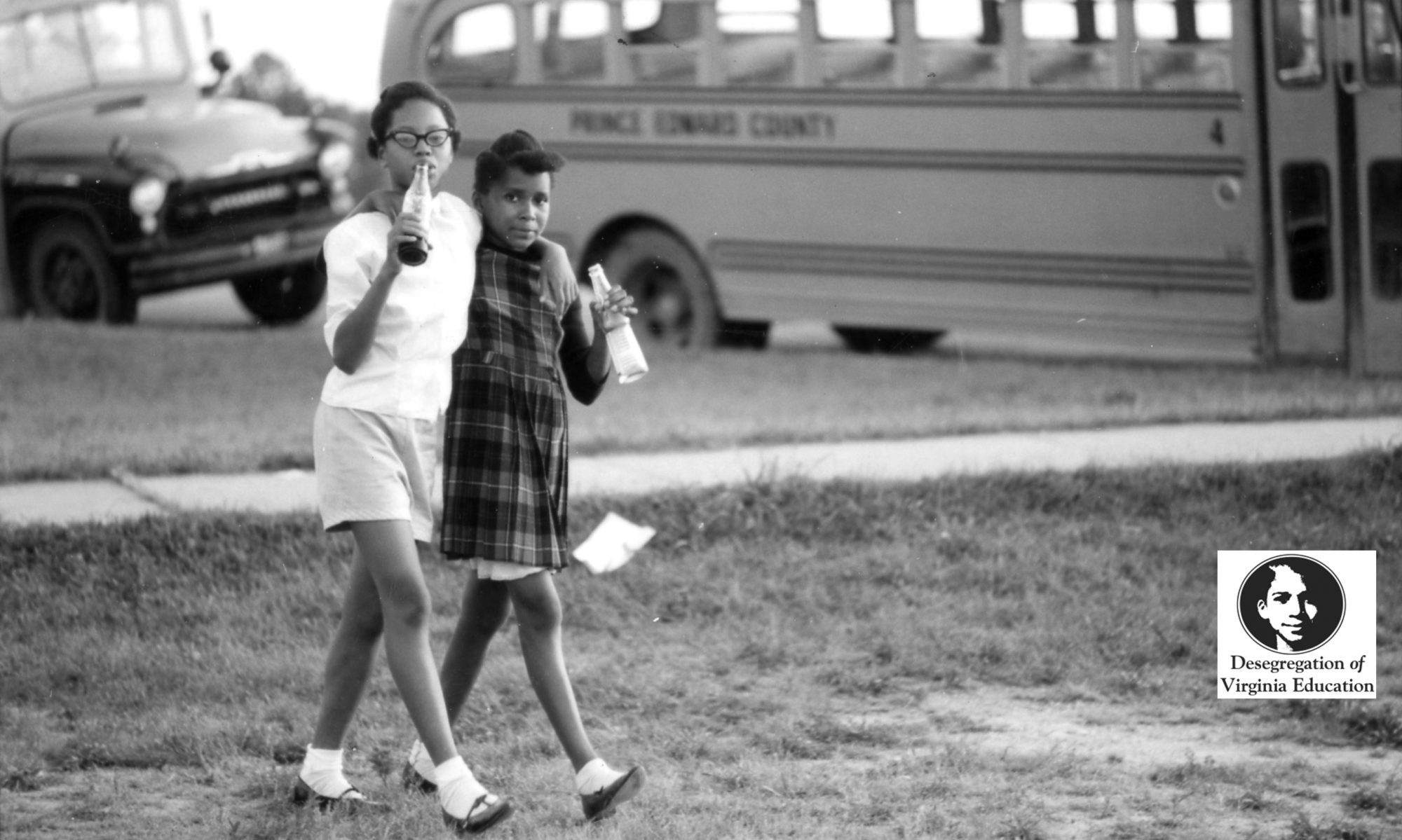WSB-TV newsfilm clip of reporter Neal Strozier commenting on a public address by Virginal governor J. Lindsay Almond in Richmond, Virginia and on the recent integration of the previously all-white schools in Arlington County and Norfolk, Virginia, 1959 Fe
| Creator | WSB-TV (Television station : Atlanta, Ga.) |
| Description | Reporter: Strozier, Neal. In this WSB newsfilm clip from February 7, 1959, correspondent Neal Strozier speaking from Arlington County, Virginia, comments on the recent integration of the all-white schools in Arlington County and Norfolk, as well as a public address by governor J. Lindsay Almond in Richmond, Virginia. The clip begins with Strozier standing in front of Stratford Junior High School in Arlington County, Virginia as people enter the school. According to Strozier, twenty-one African American students began attending seven previously all-white schools in Norfolk and Arlington County, Virginia earlier that week. He reports that all seven of the schools are maintaining security precautions. While he speaks, the camera shows a uniformed policeman outside the school. The clip breaks and then shows Strozier again, this time standing in front of the Virginia State Capitol in Richmond. While he speaks, the camera focuses on flags flying above the capitol building and on the legislative chamber and people inside it. Strozier commends the state for its “grace and dignity” during integration. He mentions a public address by governor J. Lindsay Almond on January 28 in which the governor “rejected extremist demands for obstruction at all cost.” For a few moments the clip shows Almond’s January 28 speech. Strozier begins speaking again; while he speaks, the camera returns to Stratford Junior High School in Arlington, Virginia. A policeman stands behind a “No trespassing” sign, and young women in winter clothing carry books and walk past reporters toward the school. African American students, three boys and one girl, get out of a car; the driver makes an adjustment before closing the door. Later the camera shows a Norfolk school where one African American student sits in a classroom with white students as the teacher walks back and forth in front of the classroom. Strozier, speaking again of Almond’s January 28th speech, relays the governor’s call for observance of federal law and for “keeping with Virginia’s tradition of peace and order.” Strozier confirms that local authorities in Arlington County have “shown every determination to keep peace and order” and that there white students are starting to accept their new African American peers. He also reports that schools in Norfolk, which had been closed for half a year to prevent integration are now attended by both white and African American students. While not every student has returned, he notes that those who are in school seem more interested in resuming their education than in the fact of integration. As the camera pans back to focus on Strozier, he states that police in Norfolk and in Arlington are prepared for racial incidents and praises the restraint shown in the communities. The clip audio breaks for a moment, after which Strozier comments that state and local officials surrendered “gracefully” after fighting to the end. He also notes that the National Association for the Advancement of Colored People (NAACP) “has refrained from actively pushing integration further south in Virginia where feeling might have run higher.” He explains that both the African American community and white officials want to avoid the rioting and tension that occurred during the 1957 desegregation of Little Rock Central High School. The first lawsuit for school integration in Virginia was filed in 1951 in Prince Edward County. The case was eventually incorporated into the 1954 United States Supreme Court case Brown v. Board of Education, which ruled against segregation in public education. State officials in Virginia, led by United States senator Harry Byrd, organized a plan of “massive resistance” by passing laws designed to prevent desegregation, including closing schools facing desegregation and providing tuition grants to private schools for displaced white students. In the fall of 1958, schools in Norfolk, Charlottesville, and Warren County, Virginia, were closed after the courts ordered the |
| Call number | |
| Date from | 1959 February 07 |
| Date to | 1959 February 07 |
| Geographic school | Arlington County and Norfolk, VA |
| Size | 1 clip (about 2 min.) |
| Access restrictions yes/no | |
| Access restrictions | |
| Part Of larger collection yes/no | |
| Larger collection title | |
| URL | |
| Repository | The Civil Rights Digital Library |
| Repository address | University of Georgia Libraries, University of Georgia, Athens, GA 30602-1641 |
| Repository contact name | Dr. P. Toby Graham |
| Repository contact title | Director, Digital Library of Georgia |
| Repository contact email | tgraham@uga.edu |
| Repository contact phone | (706) 583-0213 |
| DoveRegion | (outside of Virginia) |
| Subjects | o African American students
o African Americans–Civil rights o Almond, J. Lindsay (James Lindsay), 1898-1986 o Public schools o Race relations o School children o School closings o School integration o School integration–Massive resistance movement o Strozier, Neal o National Association for the Advancement of Colored People o Central High School (Little Rock, Ark.) o Public schools–Virginia–Arlington o Public schools–Virginia–Norfolk |
| Types | Broadcast-Television-News |
